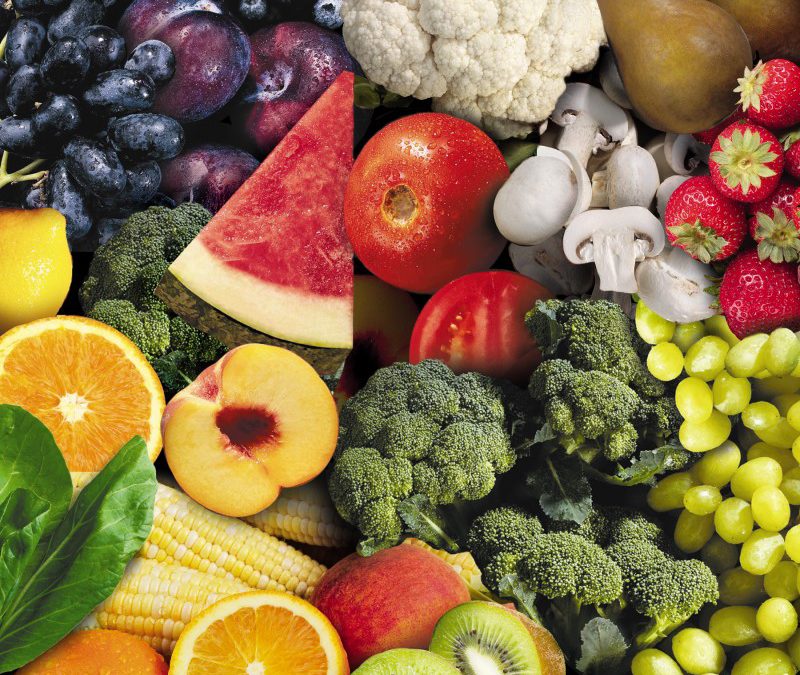by Monica Palmer
As a leader in my household hierarchy, I realize one of my core responsibilities is feeding my family. I’m kind of a big deal in this area in my home. In fact, I like to think of myself as the “Food Boss.” I make the critical decisions at the grocery store level which allow certain foods into our home while banning others. I plan the meals and snacks, and I generally prepare our family dinner.
My prestigious position unfortunately makes me the target for dinner table dissent when I insist that fruits and vegetables find their way into our diets on a regular basis. I answer these complaints with a stern dictate that they don’t have to like what I serve, but they do have to eat it…because I’m the boss.
I don’t force my children and my veggie-hating husband to eat healthier, because I am some kind of produce-pushing evil queen. I do it, because I love them, and I want to do what is best for them. When it comes to food, what is best is clear. Well, it’s clear to me at least, because I’ve heard the health experts and read the studies that indicate the consumption of fruit and vegetables can help with everything from maintaining a healthy weight to staving off cancer. All we need to do is work in five servings a day. Simple.
So, why don’t we, as a nation, eat more fruits and vegetables?
Some argue it’s because produce is expensive. It does seem like healthy foods, including fruits and vegetables, cost more than foods that are higher in calories and lower in nutrition. According to some, this has a lot to do with American agricultural policy. Traditionally our government has not offered incentives or support for fruit and vegetable production. Fruit and vegetables are actually considered “specialty items,” and farmers who receive federal farm payments to grow crops like wheat or soybeans can actually be penalized if they also grow these specialty items.
So, if I remember what I learned in my high school economics class, when something is in short supply, the price goes up. The other important factor in this equation, of course, is demand. Food Bosses like me are communicating through our choices at the grocery store each week what we demand. So, perhaps if we had a nationwide run on asparagus, the government would see the demand is there and recognize the economic benefit in supporting fruit and vegetable production.
The likelihood of that scenario is probably not great, though, because given a choice between broccoli and breakfast cereal, most of us would choose the cereal.
A few years ago, Weight Watchers changed their classification of fruits and vegetables in their point-based weight-loss program. They did this, because they realized if people had a “budget” of points to use in a day, they would choose to “spend” their points on foods other than fruits and vegetables. For example, many members would choose to spend their 3 points for a healthy snack on a handful of pretzels rather than a medium size banana. To encourage their members to eat healthier, Weight Watchers stripped the fruits and veggies of their points and made them “free items.” Now their members can eat all the fruits and veggies they want, because as a Weight Watcher leader friend of mine likes to say, “no one ever became overweight by eating too much produce.”
I recently had the pleasure of sitting in on a presentation by Sandy Rikoon, an MU professor and the director of the Interdisciplinary Center for Food Security. This organization puts out the Missouri Hunger Atlas, which charts food insecurity and hunger in each county of the state. Dr. Rikoon was discussing a recent study conducted with the input of dieticians who added survey questions regarding consumption of fruits and vegetables in homes that were classified as food insecure. The discovery was that well over half of the food insecure households were not eating sufficient servings of fruits and vegetables. The Center also found a positive correlation between food insecurity and chronic diseases like diabetes, obesity, and hypertension.
A Food Boss in a household suffering from food insecurity tends to make her choices based on the bottom line of her family’s budget. If she only has $100 for two weeks of groceries, she’s probably not going to give much thought to which foods are the healthiest. She’s going to make her purchases based on which foods are cheapest and which will keep her family free from pangs of hunger. Fresh produce is considered a luxury item to these Food Bosses, and produce often gets cut from the budget. In many low-income homes, money for food has to be traded off to cover other necessities like medication, utilities, rent, and gas. Those are tough choices to make.
The Senate and House are meeting right now to craft and pass a new farm bill, and they have some tough choices to make as well. They will make decisions about which crops the government will support, and that will influence what crops our farmers grow and how much that food will cost consumers. These policy makers will also have to decide how much money is allotted to fund the Supplemental Nutrition Assistance Program (also known as food stamps), which will allow families suffering from food insecurity to make healthier choices.
Will you please join with me in reminding these important decision makers that they have been elected as our national Food Bosses? Encourage these men and women to make choices based on the overall health of our population and not on an economic bottom line. Healthy, nutrient-rich foods should not be specialty or luxury items. They should be reasonably priced and available to everyone in this country.

